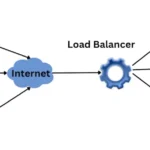Enhance the online retail experience using application delivery controllers (ADCs)
Application delivery controllers (ADCs) play a critical role in large retail companies for many reasons. These devices, also known as load balancers, act as gatekeepers for all incoming traffic to a company’s web and application servers. They help ensure traffic is properly distributed, providing load balancing, increased availability, and scalability for the company’s online platforms.
The importance of a reliable and efficient online platform in retail cannot be overstated. Consumers expect a seamless shopping experience, and downtime or slow performance can lead to lost sales and a damaged brand reputation. ADCs, help to prevent these issues by distributing traffic evenly across multiple servers, ensuring that no single server is overwhelmed, helping to prevent downtime and slow performance, and ensuring that the online platform remains available and responsive for consumers.
In addition to load balancing, ADCs provide additional features such as application acceleration, content switching, and traffic management. These features help improve the online platform’s performance, providing a better experience for consumers. For example, ADCs can be configured to cache frequently requested content, reducing the load on the back-end servers and providing faster response times. They can also be used to optimize the delivery of large files, such as images and videos, helping to reduce page load times.
With the increasing threat of cyber attacks, large retail companies must protect their online platforms from potential security breaches. One critical feature of ADCs that is especially important for large retail companies is the web application firewall (WAF). WAFs provide an added layer of security by monitoring and filtering incoming traffic for malicious activity, such as SQL injection and cross-site scripting attacks. WAFs, help to ensure that only legitimate traffic is allowed through, reducing the risk of a security breach and protecting the company’s sensitive data.
Large retail companies that operate globally also need to consider the importance of global server load balancing. Global server load balancing (GSLB) is a technique used to distribute traffic across multiple geographically dispersed servers, providing increased availability and reducing the risk of downtime. With GSLB, ADCs can be configured to route traffic to the closest available server, helping to reduce latency and improve the overall performance of the online platform for consumers.
For example, a global retail company with a website that serves customers worldwide, using GSLB, can direct traffic to the nearest data centre where the content is hosted, significantly improving the website’s performance and ensuring a high-quality user experience. Also, GSLB helps maintain the website’s high availability by directing traffic to the healthy or less loaded server in case of failure.
Application delivery controllers (ADCs), also known as application load balancers, are critical to online retail companies as they provide the reliability, efficiency, and security required to ensure a seamless and high-performance online shopping experience. They also can provide added features such as real-time rule-based traffic management, WAF, GSLB and application acceleration, which are crucial for companies operating globally, and that’s why they are a key part of the IT infrastructure of large retail companies today.











